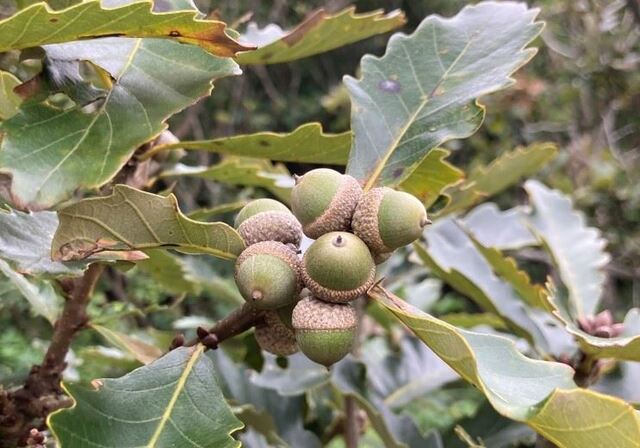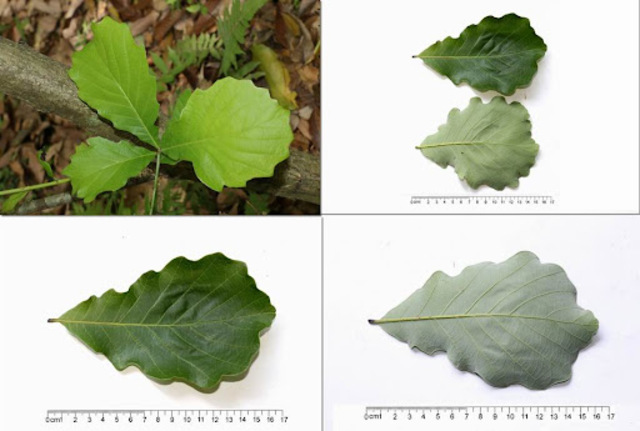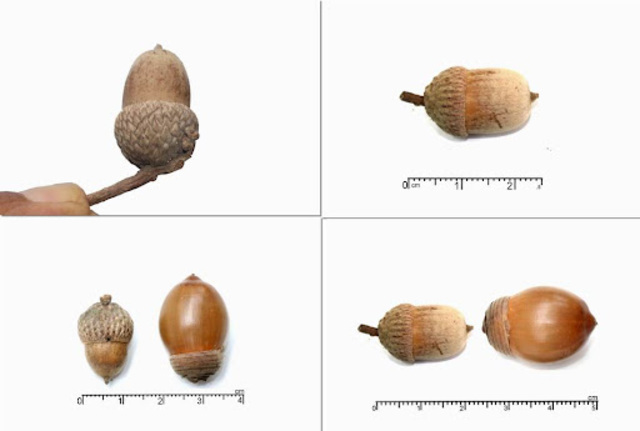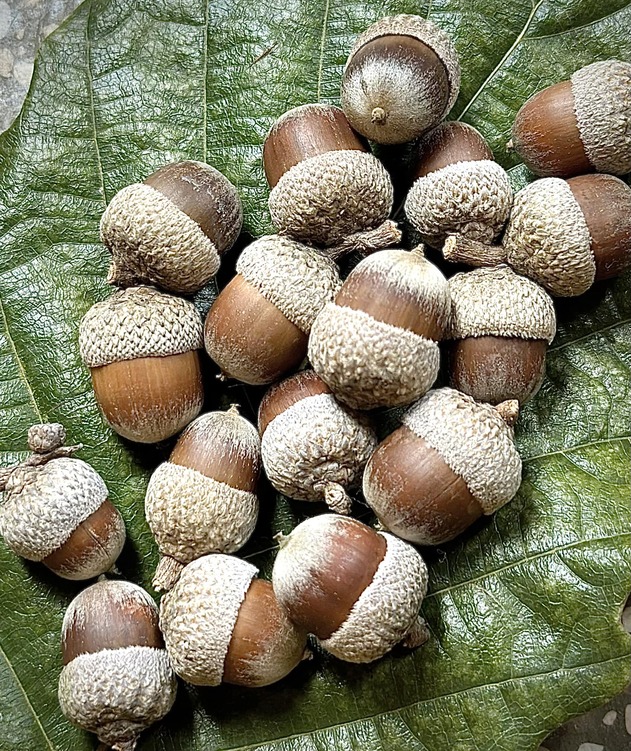The Oriental white oak (Quercus aliena) is a species of oak tree native to East Asia, particularly found in China, Japan, and Taiwan. It is part of the Fagaceae family and is known for its robust growth, wide distribution, and versatile applications in both ecological and economic contexts. This tree is often referred to by various names, including Chinese white oak, Japanese white oak, or simply oak. In this article, we will explore the botanical characteristics, growth habits, medicinal uses, and ecological significance of Quercus aliena, offering a comprehensive understanding of this tree species.

The Oriental white oak is a deciduous tree that typically grows to a height of 15 to 25 meters, with some exceptional specimens reaching up to 30 meters. It features a straight trunk and a dense crown, providing ample shade. The tree's leaves are simple, alternate, and lobed, similar to other oak species, with the leaf edges displaying shallow indentations. These leaves are generally dark green on the upper surface and lighter on the underside, showcasing a distinctive texture.
The tree produces acorns, which mature in the fall and are an essential food source for wildlife, including deer, squirrels, and birds. The acorn's hard shell is a characteristic trait, and its small size makes it an important component of forest ecosystems. Quercus aliena has smooth, grayish bark when young, which becomes rougher and darker as the tree matures.
Leaves: The leaves of Quercus aliena are elongated and lanceolate with 5 to 7 shallow lobes. They turn yellow to red in autumn, adding to the aesthetic appeal of the tree.

Bark: The bark is smooth and grayish in young trees but develops into thicker, rougher textures as the tree ages.
Flowers: Quercus aliena is monoecious, meaning it has both male and female flowers on the same tree. The male flowers are small, catkin-like, and produce pollen in the spring, while the female flowers develop into acorns.
Acorns: The acorns of Quercus aliena are small (typically 1–2 cm) and have a smooth, rounded shape. They mature in autumn and drop to the ground to propagate the next generation of trees.

The Oriental white oak plays a crucial role in forest ecosystems. It is particularly significant in temperate forests, where it provides essential habitats for a variety of species. The tree's acorns are a vital food source for mammals and birds, while its dense foliage offers shelter to insects, birds, and small mammals.
Furthermore, Quercus aliena is often planted in reforestation projects due to its ability to grow well in a variety of soil types and conditions. It is commonly found in forests, hillsides, and mountainous regions at altitudes ranging from 100 meters to 2,000 meters.
In traditional medicine, various parts of the Oriental white oak have been utilized for their therapeutic properties. Here are some of the key medicinal uses:
Acorns: The acorns of Quercus aliena are known for their astringent properties. They are often ground into powder and used as a remedy for diarrhea, dysentery, and other digestive issues. In addition, acorns are sometimes used in herbal tonics to improve digestion and strengthen the stomach.
Bark: The bark of Quercus aliena is used in traditional medicine to treat wounds and inflammation. The bark contains tannins, which have antiseptic and anti-inflammatory properties, making it a popular choice for treating skin conditions and promoting wound healing.
Leaves: The leaves of this tree are also used in traditional remedies for coughs and respiratory issues. They are often boiled into a decoction and consumed to soothe the throat and relieve symptoms of cold and flu.
Wood: While not directly related to medicinal use, the wood of Quercus aliena is used for making furniture, crafts, and tools due to its durability and resilience.
Quercus aliena is primarily found in East Asia, where it thrives in a variety of mountainous and hilly regions. The tree is commonly seen in the following areas:
China: Quercus aliena is widely distributed across China, especially in the northern, central, and southern regions, including Hebei, Sichuan, Jiangsu, and Yunnan.
Japan: It is also prevalent in the mountains of Japan, particularly in Honshu, where it grows in mixed forests.
Taiwan: Quercus aliena can be found growing at moderate elevations throughout Taiwan.
This species thrives in a variety of soil types, including loamy, sandy, and clay soils, and can tolerate a range of soil pH levels. Its ability to grow in well-drained soils and withstand drought conditions makes it an attractive species for land reclamation and erosion control.
Due to its hardwood and resilience, the Oriental white oak is increasingly being used in landscaping and forestry projects. Its tall, sturdy trunk and dense foliage make it an excellent choice for urban parks, public gardens, and forest restoration efforts. Quercus aliena is also valued for its aesthetic beauty in fall, when its leaves turn vibrant shades of yellow and red.
As an ornamental tree, it is well-suited for regions with temperate climates and can be planted in open spaces where it has room to spread and mature. Its strong root system and tolerance for varied conditions make it a low-maintenance option for landscape designers and urban planners.

The Oriental white oak (Quercus aliena) is a species with significant ecological, medicinal, and economic value. Its role in forest ecosystems, contribution to reforestation efforts, and use in traditional medicine highlight its importance in various sectors. Whether planted for its beauty, its ability to improve soil health, or its valuable wood and acorns, Quercus aliena is a tree worth appreciating for its versatility and resilience.
animal tags: Fagaceae
We created this article in conjunction with AI technology, then made sure it was fact-checked and edited by a Animals Top editor.